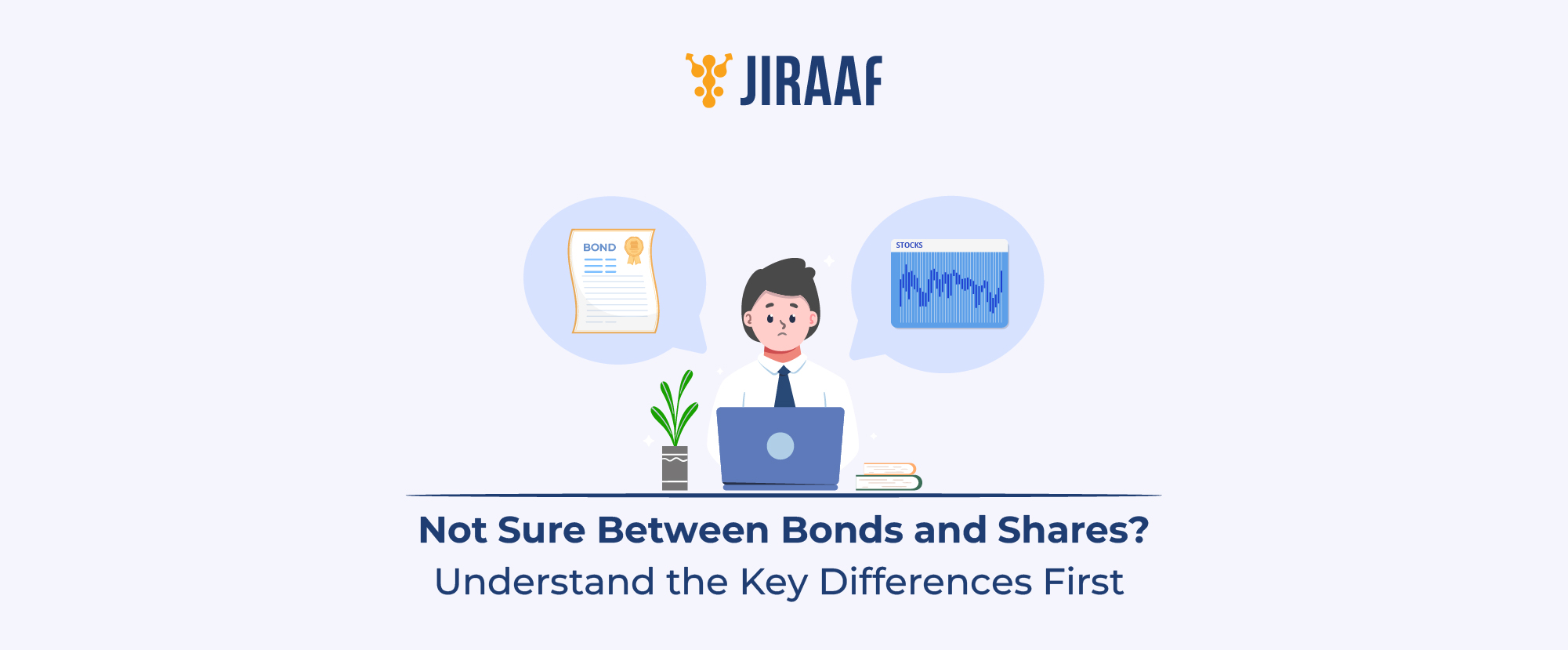Did you know that not all bonds have a fixed maturity date? Yes, Additional Tier 1 bonds (AT1bonds), also known as contingent convertible (CoCo bonds), do not have a fixed maturity date. These bonds are perpetual, meaning the issuer is not obliged to repay the principal amount to investors, except in limited circumstances such as a regulatory call or liquidation. But why would investors put their money in such an investment? Are they even regulated?
AT1 bonds are sophisticated financial instruments issued by banks to maintain their capital reserve under RBI regulatory norms. In this blog, we’ll explain what AT1 bonds in India are, how they work, their key features, benefits, risks, and why they’re an attractive choice for investors.
So, let’s dive in.
What are AT1 Bonds?
Additional Tier 1 bonds are a type of perpetual debt issued by banks. These bonds are designed to be riskier compared to traditional bonds. They help strengthen the bank’s core capital to meet RBI regulatory requirements, such as those outlined in Basel III. Unlike regular bonds, AT1 bonds do not have a maturity date. Meaning, these bonds can last indefinitely unless called by the issuer bank.
AT1 bonds are contingent. The issuer bank issues these bonds with a call option, which gives them the right to call back these bonds after a minimum of five years. In fact, AT1 bonds are designed to absorb losses during times of financial stress.
To understand AT1 bonds more clearly, we will need to discuss the types of capital banks have.
Within Tier-1 Capital
- Common Equity Tier-1 (CET-1): This is the highest quality capital, consisting mainly of common shares and retained earnings, providing maximum buffer against losses.
- Additional Tier-1 (AT-1) Capital: This includes instruments like AT1/CoCo bonds which are subordinate to other debt but can be converted into equity or written off if the bank’s capital falls below specified levels.
You must be wondering how a sophisticated debt security like this works in India. Well, let’s take a look.
How AT1 Bonds Work in India
In India, AT1 bonds are issued by banks to meet their Capital Adequacy Requirement (CAR) under the guidelines of the Reserve Bank of India. CAR is a key measure of bank health under Basel III norms launched post the 2008 global financial meltdown.
Whenever an investor buys AT1 bonds, they begin receiving regular payments, just like those from regular bonds. These payments are typically semi-annual or quarterly, depending on the issuer.
However, as discussed above, these bonds are perpetual in nature. The issuer bank can convert these bonds into equity (reducing its debt) if its capital levels are below the prescribed threshold. Additionally, the RBI can also force the issuer bank to withdraw or write off these bonds if it perceives a significant deterioration in the bank’s financial health.
Who Issues them and Why?
Banks use AT1 bonds as a method of raising capital without diluting the existing equity ownership. These bonds act as loss-absorbing instruments under strict Basel III norms and help banks in meeting their regulatory capital requirements.
To put it simply, AT1 bonds can be written down or converted into equity at times of financial stress. This is how banks use AT1 bonds by creating capital buffer that helps banks absorb losses and safeguards depositors’ interests.
Key Features of AT1 Bonds
- No Maturity Date: These are perpetual bonds and don’t have a fixed expiry.
- High Coupon Rates: These bonds offer higher interest returns compared to regular bonds.
- Subordinated and Loss-Absorbing: AT1 bonds absorb losses first in case of bank failure as they are ranked below senior debt.
- Prepayment & Recall: Banks can call back bonds after 5-7 years or earlier under certain conditions.
- Minimum Investment: The minimum investment amount for these bonds is ₹1 crore.
- Limited Liquidity: Investors cannot return these bonds to the banks as there are no put options issued with them. However, they can release these bonds in the secondary markets.
Benefits and Risks of AT1 Bonds
AT1 bonds are complex debt instruments that have their own advantages and disadvantages. Below are the benefits and risks associated with these bonds.
Why Investors May Find Them Attractive
- Higher Yields: These bonds offer higher yields to offset the risk. These yields are generally higher than those of regular bonds and fixed deposits.
- Supports Bank Stability: These bonds help keep banks afloat, which adds to overall financial system stability.
- Portfolio Diversification: Low correlation with other asset classes or market sentiment makes them ideal for HNIs and institutional portfolios.
Major Risks Involved
- Write-off Clause: These bonds are unsecured. Meaning, if the issuer bank faces severe financial stress, the bank can write-off these bonds and the investors will stop receiving interest payments entirely.
- No Principal Guarantee: AT1 bonds do not return the investor’s principal amount.
- Interest Skips: In times of financial stress, banks may defer or skip interest payments without defaulting.
Regulations Around AT1 Bonds in India
India’s Basel III norms mandate banks to maintain a minimum CET-1 (Common Equity Tier 1) and AT1 capital ratio.
The SEBI guidelines also influence AT1 bonds, especially since a significant portion is held by mutual funds. SEBI mandates that these bonds be valued on the basis that they will be redeemed in 100 years and caps their holdings at 10% of the mutual fund’s assets (a restriction recently deferred). These regulations ensure transparency, prudence, and risk mitigation in the market.
Should You Invest in AT1 Bonds?
AT1 bonds are not designed for regular retail investors due to their complex nature and significant risks. These bonds are primarily suited for:
- High Networth Individuals
- Institutional Investors
The minimum investment amount for AT1 bonds is ₹1 crore. Even eligible investors should only expose a small portion of their overall portfolio to AT1 or CoCo bonds due to their inherent risks and complexity.
Secondary Market and Liquidity
AT1 bonds are listed on Indian stock exchanges. This provides investors with a way to sell them in the secondary market before maturity. However, liquidity remains a significant concern as these instruments are typically thinly traded with infrequent transactions and limited buyer interest.
For investors who do choose to invest in AT1 bonds, it’s crucial to have a long-term investment horizon and the financial capability to hold the bonds indefinitely, given the potential liquidity constraints and perpetual nature of these instruments.
Is There a Difference Between AT1 Bonds and CoCo Bonds?
AT1 bonds and contingent convertible bonds can be used interchangeably as they are similar debt securities and serve the same purpose.
Contingent Convertible bonds are hybrid securities as well. These bonds can get converted into equity much like convertible bonds but with more modernized conversion terms tailored specifically for the banking sector.
Similar to AT1 bonds, CoCo bonds only convert when one of the parameters set forth by the issuer bank is triggered such as:
- If the bank’s share price fell below a specified threshold.
- If the banks need to meet regulatory capital requirements.
- If the directions from supervisory or regulatory authorities say so.
Conclusion
AT1 bonds represent a unique hybrid instrument that bridges debt and equity characteristics by offering higher yields to compensate for their complex risk profile. These perpetual bonds serve a critical function in the banking system by providing contingent capital that can absorb losses during financial stress. However, they come with significant risks including write-off clauses, interest payment suspensions, and potential conversion to equity.
AT1 bonds should be considered only by HNIs and institutional investors as a small component of a well-diversified portfolio, with full awareness of their unique risks and characteristics.









